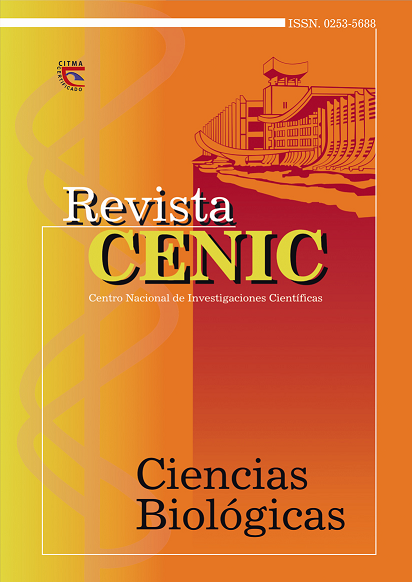Effect of protein hydrolysates on the growth of species of the genus Enterococcus
Keywords:
Enterococcus, culture media, tryptoseAbstract
Microorganisms have different and specific nutritional requirements. Enterococci are a group of nutritionally fastidious bacteria in their metabolic processes. For the isolation of these microorganism’s different combinations of protein hydrolysates must be used in defined proportions capable of supplying their metabolic needs. The aim of this work was to study the effect of protein hydrolysates from different origin on the growth of enterococci. Three nutritional compositions were tested in which protein hydrolysates from different animal and microbial origin were included (bacteriological peptone Z, meat extract and tryptose). Nutritional compositions were evaluated using microorganisms from the Genus Enterococcus and from other microbial genera, by different microbiological methods. Tryptose, developed in BioCen, proved to be highly nutritive components for the development of enterococcal colonies with diameters larger than 2 mm after incubation for 24 hours. Enterococci showed pink color and most of microorganisms belonging to other genera were inhibited by the action of thallium acetate. The mixture of tryptose and meat extract, at the concentrations of 5,0 and 3,0 g/L, respectively, assured favorable nutritional conditions and the fast development of different species of enterococci of diabetes.Downloads
Downloads
Published
How to Cite
Issue
Section
License
Los autores que publican en esta revista están de acuerdo con los siguientes términos:
Los autores conservan los derechos de autor y garantizan a la revista el derecho de ser la primera publicación del trabajo al igual que licenciado bajo una Creative Commons Atribución-NoComercial-CompartirIgual 4.0 Internacional que permite a otros compartir el trabajo con un reconocimiento de la autoría del trabajo y la publicación inicial en esta revista.
Los autores pueden establecer por separado acuerdos adicionales para la distribución no exclusiva de la versión de la obra publicada en la revista (por ejemplo, situarlo en un repositorio institucional o publicarlo en un libro), con un reconocimiento de su publicación inicial en esta revista.
Se permite y se anima a los autores a difundir sus trabajos electrónicamente (por ejemplo, en repositorios institucionales o en su propio sitio web) antes y durante el proceso de envío, ya que puede dar lugar a intercambios productivos, así como a una citación más temprana y mayor de los trabajos publicados (Véase The Effect of Open Access) (en inglés).















